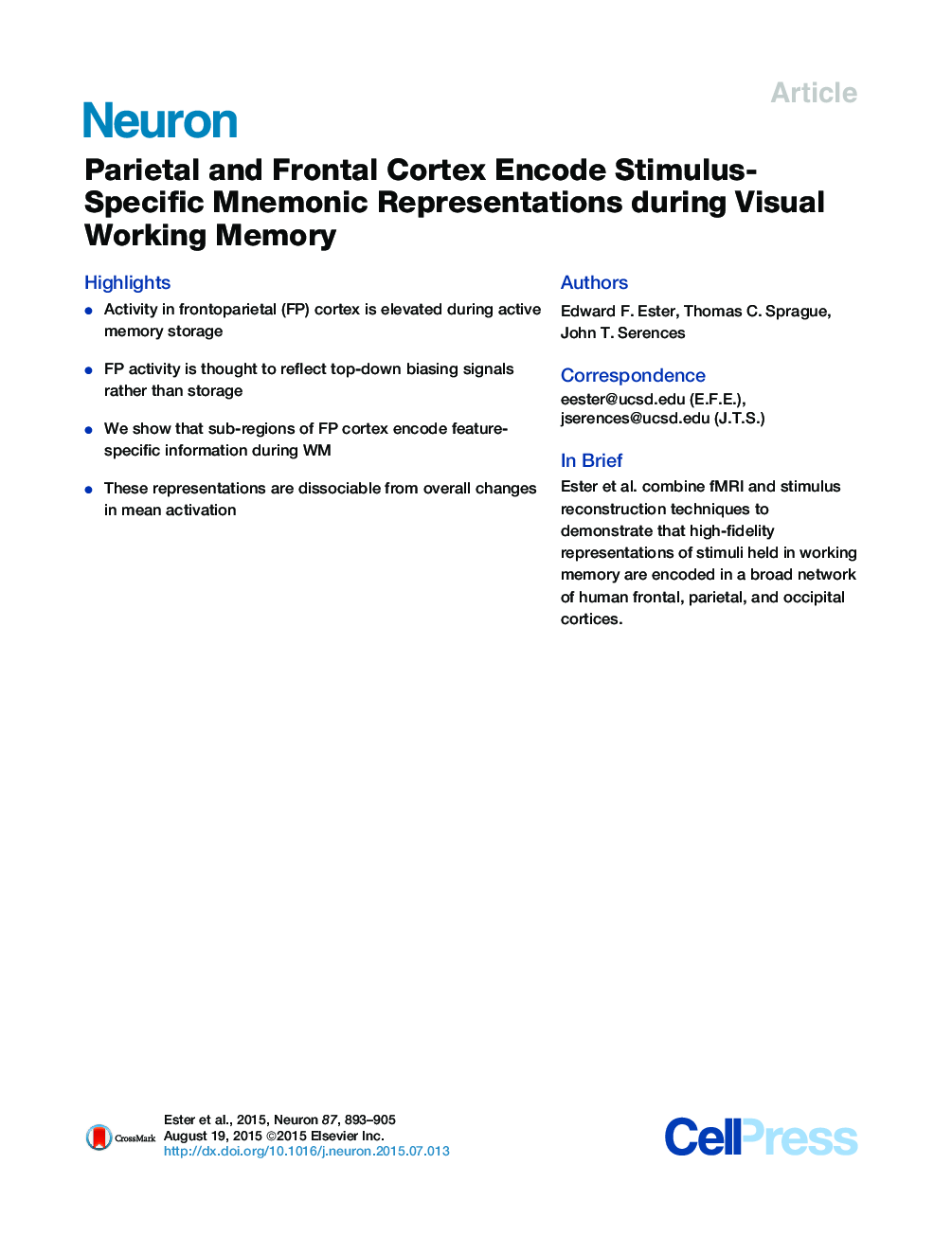| Article ID | Journal | Published Year | Pages | File Type |
|---|---|---|---|---|
| 4320829 | Neuron | 2015 | 13 Pages |
•Activity in frontoparietal (FP) cortex is elevated during active memory storage•FP activity is thought to reflect top-down biasing signals rather than storage•We show that sub-regions of FP cortex encode feature-specific information during WM•These representations are dissociable from overall changes in mean activation
SummaryWorking memory (WM) enables the storage and manipulation of information in an active state. WM storage has long been associated with sustained increases in activation across a network of frontal and parietal cortical regions. However, recent evidence suggests that these regions primarily encode information related to general task goals rather than feature-selective representations of specific memoranda. These goal-related representations are thought to provide top-down feedback that coordinates the representation of fine-grained details in early sensory areas. Here, we test this model using fMRI-based reconstructions of remembered visual details from region-level activation patterns. We could reconstruct high-fidelity representations of a remembered orientation based on activation patterns in occipital visual cortex and in several sub-regions of frontal and parietal cortex, independent of sustained increases in mean activation. These results challenge models of WM that postulate disjoint frontoparietal “top-down control” and posterior sensory “feature storage” networks.
